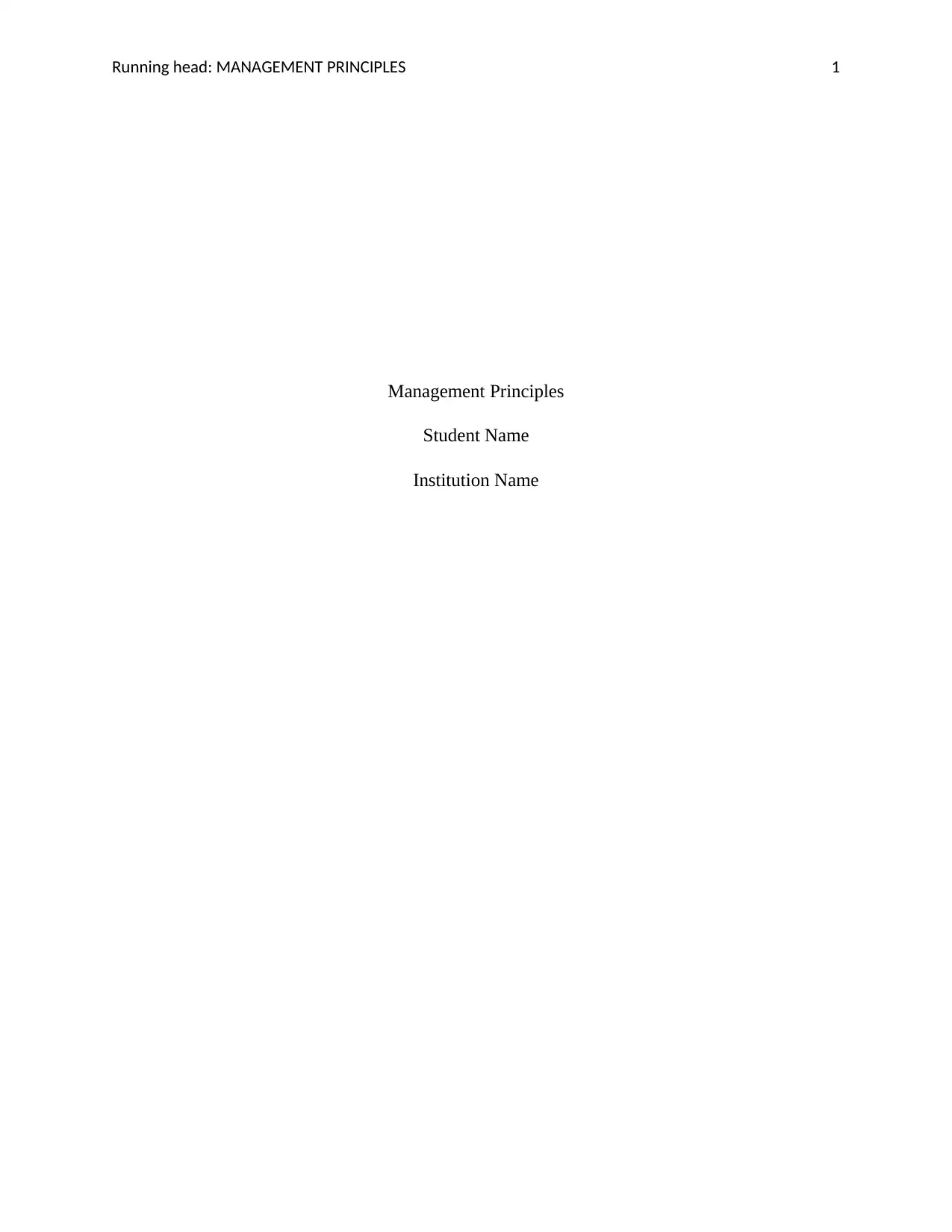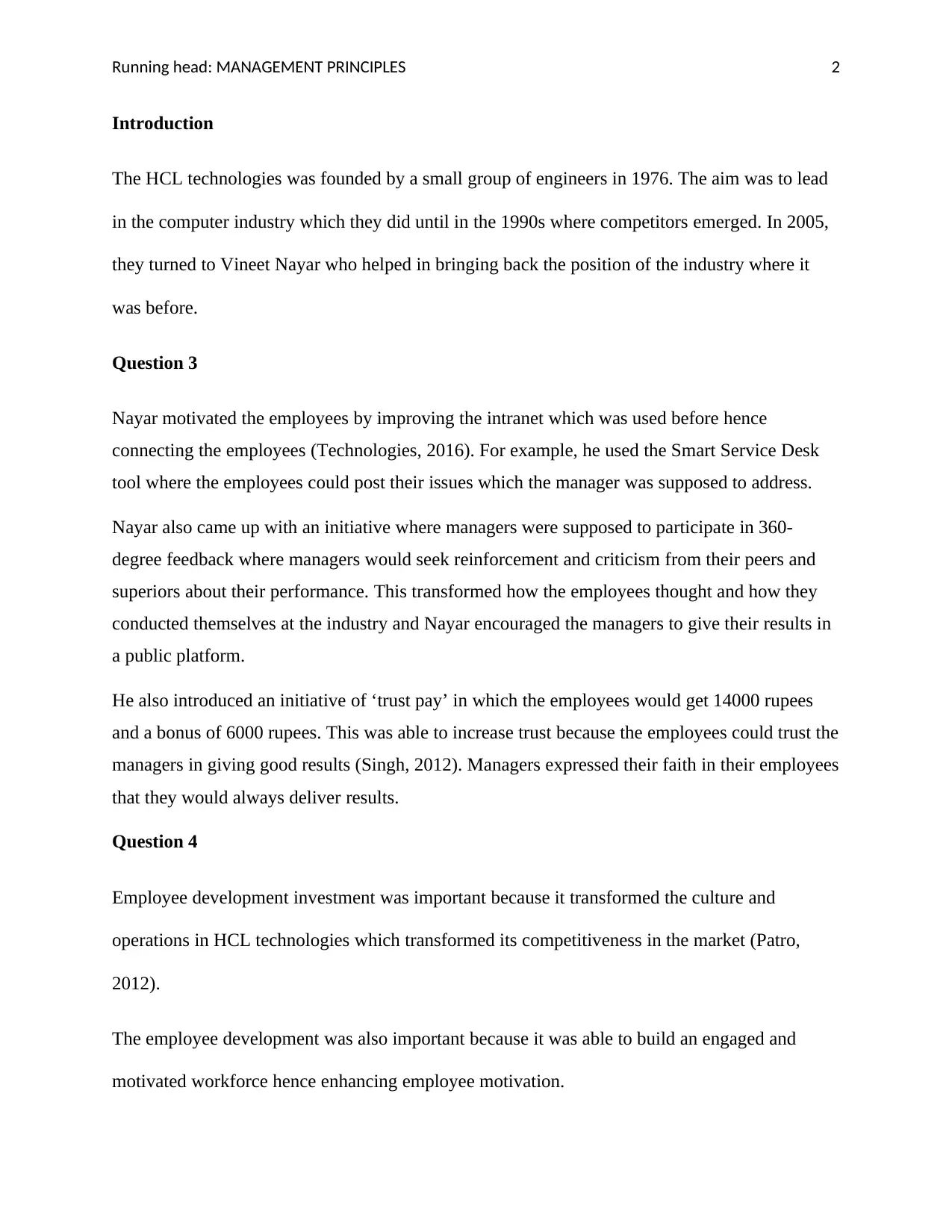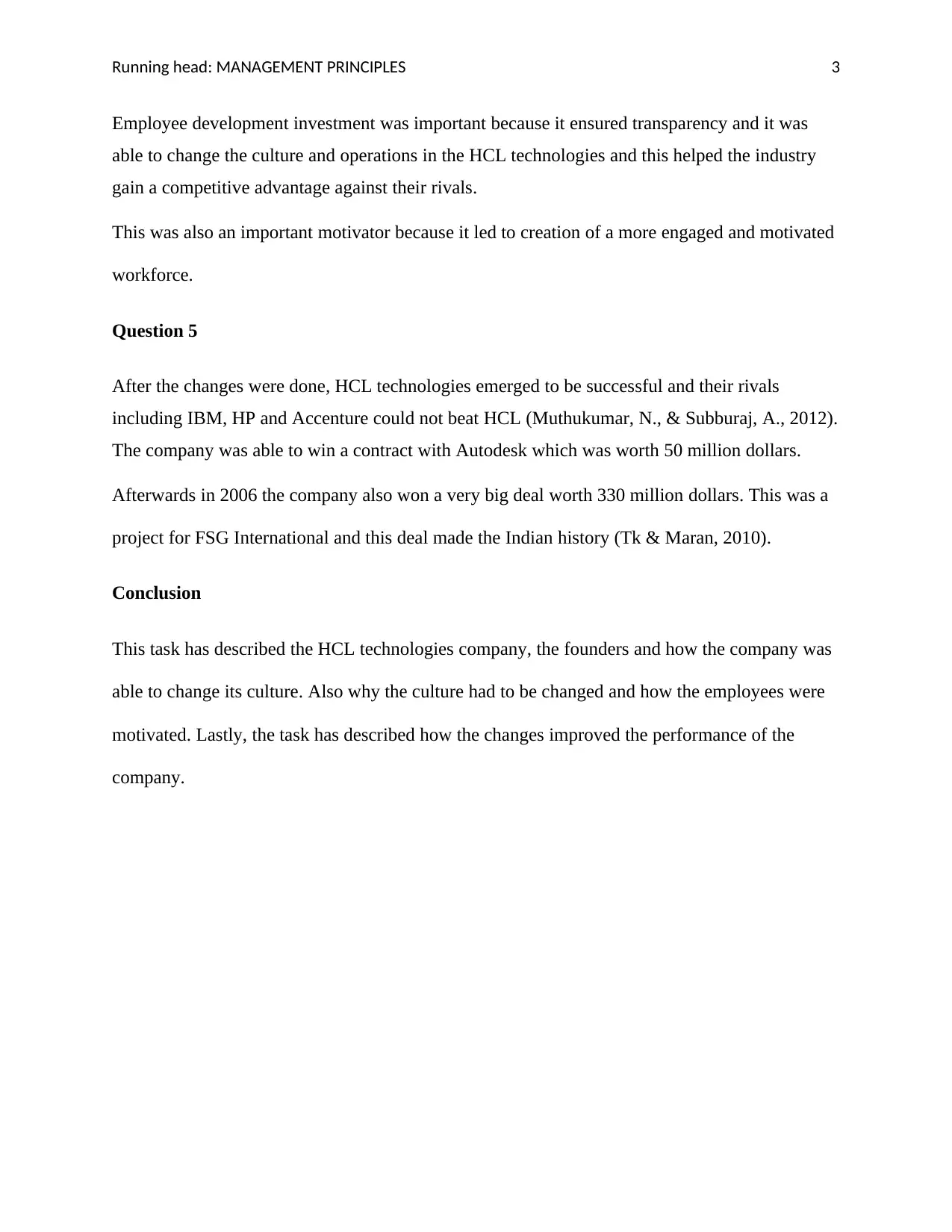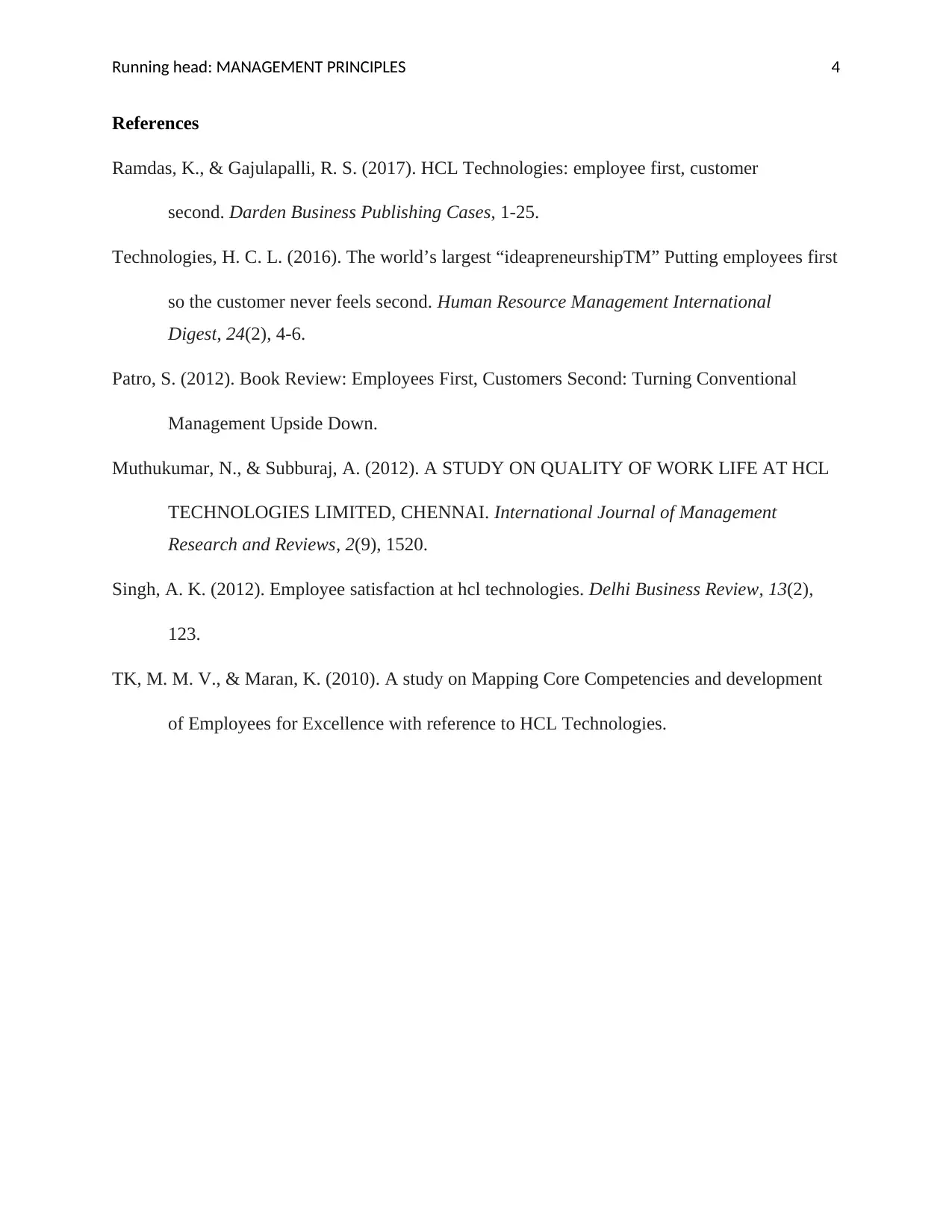Management Principles: A Case Study of HCL Technologies' Success
VerifiedAdded on 2023/06/11
|4
|706
|474
Case Study
AI Summary
This case study analyzes HCL Technologies' transformation under Vineet Nayar, focusing on how changes in management principles and employee motivation led to increased success. The study highlights Nayar's initiatives, such as the improved intranet, 360-degree feedback, and 'trust pay,' which fostered a more engaged and motivated workforce. The investment in employee development proved crucial in transforming the company's culture and operations, enhancing its competitiveness against rivals like IBM, HP, and Accenture. The case concludes that these changes were instrumental in securing significant deals and improving the overall performance of HCL Technologies, marking a significant turnaround in the company's history. Desklib provides access to similar solved assignments and past papers for students.
1 out of 4











![[object Object]](/_next/static/media/star-bottom.7253800d.svg)